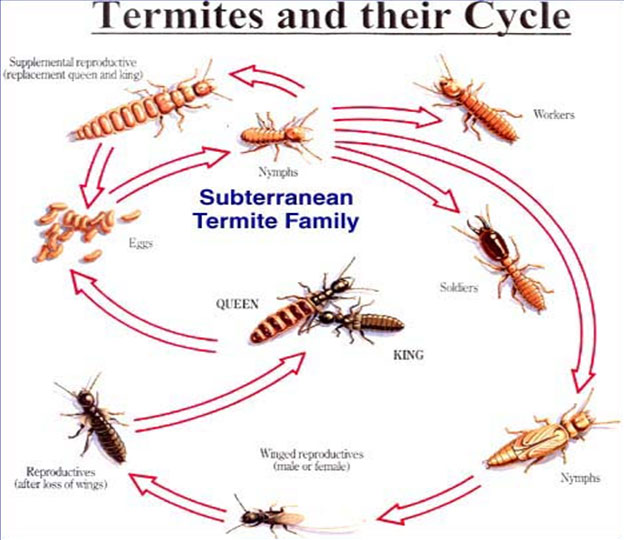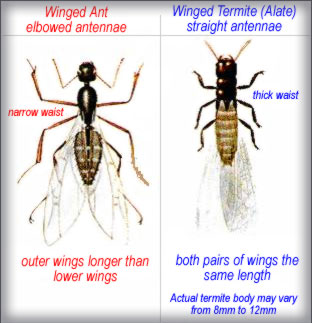- Have any questions?
- 1800 70 90 88
- info@redknight.com.au
Any Inquiries Please Call 1800 70 90 88
Frequently asked questions
Termites are social insects and practice caste system, which consists of queen, king, soldier, worker, alate (winged reproductive) and immature (nymphs and eggs). Each of the castes shares similar body form and specific tasks. Queen will be the main egg-laying ant while the soldiers defend the colony from enemies or intruders. Alates will go for swarming in order to mate and then start a new colony. Workers are the busiest where they will need to maintain, construct and repair the nest, forage and feed other colony members.
Termites live in colonies and the nests are usually located underground, in wood or in trees. They feed mostly on cellulose based material or wood by-products. Termites can be grouped under 3 categories based on the location of their colony: subterranean termite, dry wood termite and damp wood termite.
For subterranean termites, they build their nest under the soil and are highly dependent on moisture. Besides that, they construct mud tubes or tunnels to prevent desiccation while foraging for food. Dry wood termites are able to survive under low moisture condition and fecal pellets could be seen near the infestation area. Damp wood termites prefer to feed on decayed wood structure such as tree bark, rotten root and buried timbers. Subterranean Termites live in underground colonies or in moist secluded areas that can contain up to 2 million members. Subterranean termites are the most destructive insect pests of wood. They cause billions of dollars in damage each year and have a negative impact on a family's most valuable possession- the home. In nature, subterranean termites are beneficial because they break down cellulose into usable nutrients. The biomass resulting from this process is recycled to the soil as humus. Subterranean termites are, therefore, considered important in our ecosystem. Problems occur when termites attack the wooden elements of homes, businesses and warehouses built By us.

King
The original king, along with the queen tends to the young during the early life of the colony. He fertilizes
the queen from time to time. And like the queen is long lived.
queen
The queen can live up to 25 years and lay more than 2000 eggs a day.
Soldier
Soldier’s termites are the defenders of the colony. They protect the colony against intruding ants or termites from others colonies. Usually, this group of termites make up of 10 to 15 of a population in a colony. Soldiers are sterile (cannot reproduce) and blind. Due to their giant size mouthpiece, they also cannot feed directly and have to rely on workers to feed them.

Alate workers
Workers are the only termite members that damage our wooden structures by feeding on them. They are responsible for all labors in a colony. They take care of young termites, repair nest, build foraging tunnel, locate food, and feed other members including the Queen and King of a colony. Like soldiers, workers
are also sterile and blind. They usually make up more than 80 of a colony population.
Alate
The alate is simply the adult, sexually mature stage in the ant or termite life cycle. Alates develop in the colony from immature stages prior to the flight season. When the alates receive the proper cues (warm temperatures, bright sunlight, low winds, for example) they will leave the colony and flyaway to start their own colonies. Male and female termites shed their wings and will pair up when a suitable mate is found. Then they will search for a suitably damp piece of wood or soil where they will start their new colony.
